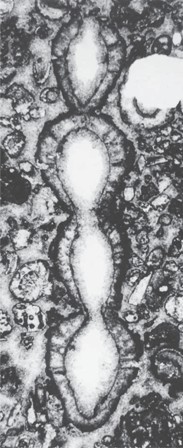Travertines and calcareous tufa deposits: an insight into diagenesis
Main Article Content
Abstract
Travertines and calcareous tufa are porous deposits formed by interactions between ambient precipitation of calcium carbonate and resident organisms under different temperature regimes. The distinctions between travertine as thermal spring deposits and calcareous tufa (Kalktuff) as deposits in the springs and rivers at ambient temperatures are fluid. Both represent end points in bio- and physico-chemical calcification processes across a broad gradient of temperature, mineral composition and ion saturation levels. Ecological preferences of micro- and macroorganisms in travertine depositional systems result in the re-distribution of water flow, modification of the landscape and its ecology. The resulting sedimentary structures include new environmental settings with different and diversified biota. They also include different microenvironments of diagenesis with different timings of the processes involved. Conditions in modern ambient temperature travertines of the Plitvice system of lakes and waterfalls are compared with the similar, ancient system of Rocchetta a Volturno, in the central Apennines. Diagenetic alterations are described and illustrated starting with biologically identified primary deposits.
Downloads
Download data is not yet available.
Article Details
Issue
Section
Original Scientific Papers
Authors have copyright and publishing rights on all published manuscripts.

